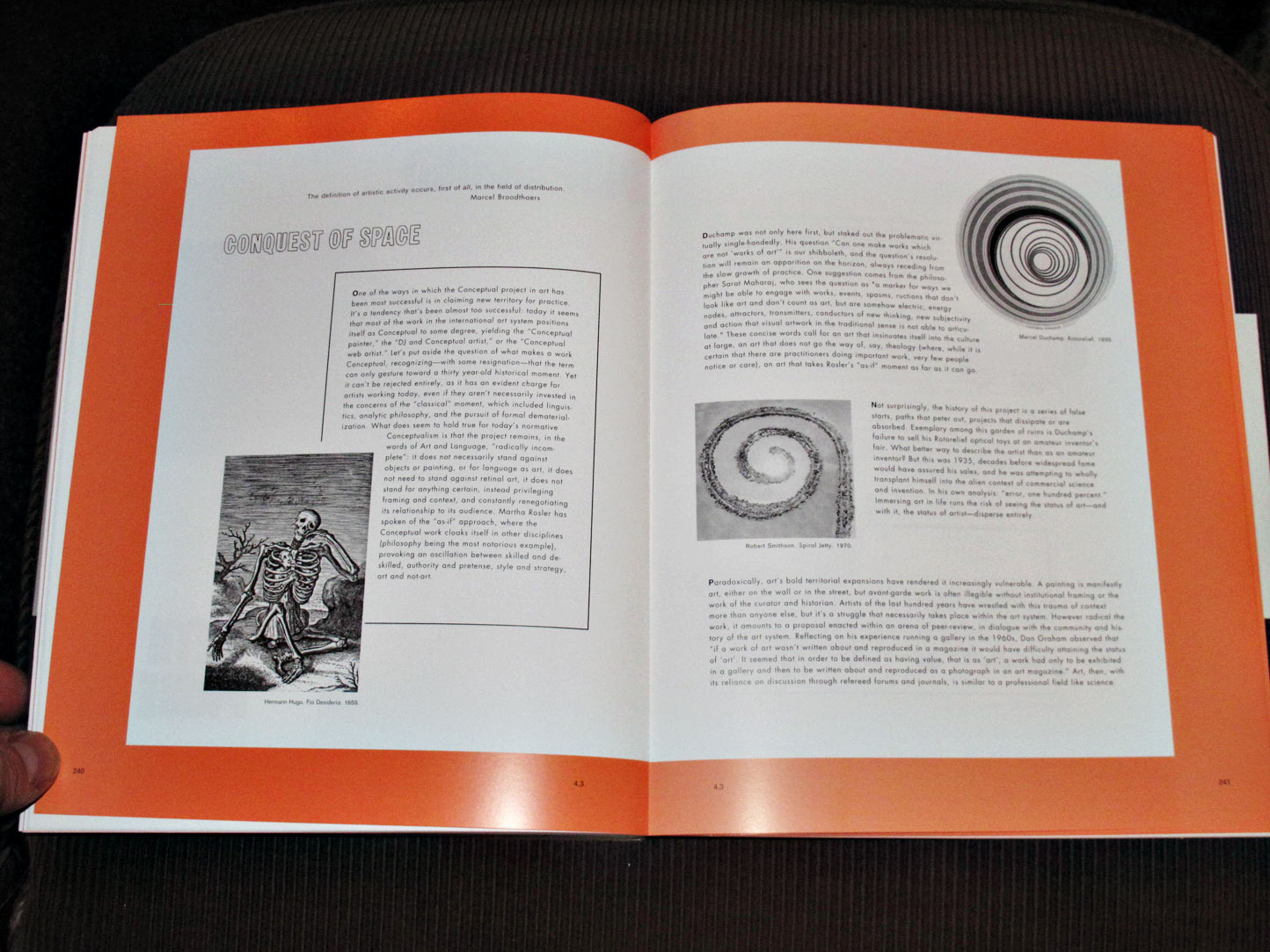
The content and composition are, however, often idiosyncratically self-reflexive or descriptively florid, lending a note of earnest authenticity to a strangely hyper-real product. Price’s manipulation of material is seamlessly coherent and authoritative. Unified by Price’s narration, the display of images is set against infinitely spiralling abstract digital television broadcasting backdrops. This is edited together with examples of the artist’s previous works and found footage. The video follows the format of, and is intercut with, visual footage from a public lecture that Price delivered on his work in 2007. Redistribution itself is encyclopaedic in reach and waywardly academic in tone. He is as precise and transparent about his artistic intention and theoretical methodology as he is about his symbolic use of materials and objects. In an accompanying video projection piece, Redistribution (2008–ongoing), Price presents himself discussing the vacuum-forming process and its aesthetic and cultural resonance. A fairly laborious means of encasing unique and malleable objects such as the vintage jacket or – in other similarly formed pieces – the shape of a woman’s breast, a clenched fist or a Gerbera flower. Although the synthetic material used by Price is contemporary, in terms of sculptural casting it’s an old-fashioned process. It involves melting a form of hot plastic around a solid object and then allowing it to cool into a rigid mass applied by vacuum to create a single form or a reusable mould. Vacuum forming is primarily used for packaging mass-produced consumer goods. Hung high up on the white gallery wall, they looked chic and inert. Five of these works were presented in a line as a chromatic fade, from black to grey to silver to white. Executed in a range of colours, each work consists of a sheet of vacuum-formed high-impact polystyrene bearing the trace of a bomber jacket and a mark of the year of manufacture: here 2008. Seth Price’s recent solo exhibition at Kunsthalle Zurich included seven of his signature ‘Vintage Bomber’ pieces. Their mind becomes energised by thought.’ 1 They open a book somewhere, read a page, see something that interests them and then maybe they go further and something happens to their mind. I really don’t care how someone first connects with theory, so long as they connect. That’s fine by me, as long as people don’t fetishise the language that’s in the book.

#SETH PRICE DISPERSIO ZIP#
We wanted them to be short, suggestive, hip, cool … something you could just zip up in your pocket and of course it became a kind of fetish, or cult item. We came up with this format, this little black book that goes so nicely with the downtown, leather jacket, art crowd.


I went to a number of publishers who all laughed and said, that won’t sell. ‘… the magazine was selling well, so I thought, why not publish the pure theory in the form of these books, the Foreign Agent series? This was around 1983 and I was familiar with several French theorists who hadn’t been introduced in America – Baudrillard, Virilio, Guattari, even at that point, Deleuze.


 0 kommentar(er)
0 kommentar(er)
